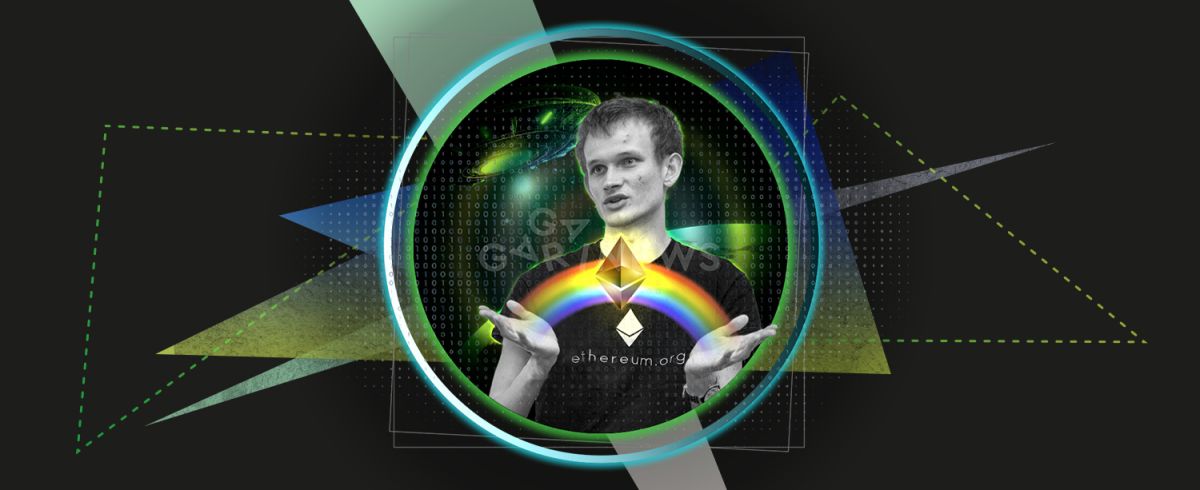Buterin on his vision of the Ethereum Application Ecosystem

Vitalik Buterin is known for his unorthodox humor and edgy personality, but he is also a visionary. In his blog post, he talks about the future of the Ethereum application ecosystem, outlining what he believes to be the most promising areas.
On this page
Vitalik Buterin, the co-founder of Ethereum, is excited about the future of the Ethereum application ecosystem.
In his new lengthy blog post, he elaborates on different use cases, focusing on such categories as money, decentralized finance (defi), the identity ecosystem, DAOs, and hybrid applications.
Money is still king
In the opening, he says that “ten, five or even two years ago my opinions and what Ethereum and blockchains can do for the world were very abstract.”
Today, however, he says that everything has changed dramatically.
He notes that while some expectations like decentralized Amazon on the blockchain have not been fulfilled, there is much to be satisfied with.
In particular, Buterin recounts his visit to Argentina where cryptocurrencies are widely used due to high levels of inflation, emphasizing that he randomly found a coffee shop where the owner happily accepted his crypto payment.
While the speed of the transaction was subpar back then, Buterin points to the side effects of the Merge, saying that the transactions are significantly faster now while making the chain more stable.
Meanwhile, in wealthier countries, he argues cryptocurrencies are extremely useful for making donations.
Cryptocurrency is the only thing currently being developed that can realistically combine the benefits of digitalization with cash-like respect for personal privacy,
he adds when commenting on societies’ endeavor to go cashless
Commenting on the volatility of coins, he emphasizes, among other things, the existence of stablecoins, noting that they are resistant to the most large-scale and opaque forms of censorship.
I see the stablecoin design space as basically being split into three different categories: centralized stablecoins, DAO-governed real-world-asset backed stablecoins and governance-minimized crypto-backed stablecoins,” he says, adding that “From the user's perspective, the three types are arranged on a tradeoff spectrum between efficiency and resilience.
An overcapitalized monster
Speaking about defi, he says that while the category “started off honorable but limited, it turned into somewhat of an overcapitalized monster that relied on unsustainable forms of yield farming.”
Buterin thus suggests that it is in the early stages of setting down into a stable medium, improving security, and refocusing on a few applications that are particularly valuable.
Decentralized stablecoins are, and probably forever will be, the most important defi product, but there are a few others that have an important niche: Prediction markets, Other synthetic assets, Glue layers for efficiently trading between other assets,
he writes.
Saying that identity is a complicated, multi-faceted concept, he talks, among other things, about proof-of-humanity and other proof-of-personhood systems that let users prove that they are indeed unique humans.
The big future challenge for this ecosystem is privacy. The status quo involves putting large amounts of information on-chain, which is something that is “fine until it's not”, and eventually will become unpalatable if not outright risky to more and more people,
he emphasizes.
Talking about DAOs governance, he deep dives into such subcategories as decentralization for robustness, decentralization for efficiency, and decentralization for interoperability while also touching upon what he calls fancy new governance mechanisms. They include quadratic voting, futarchy, liquid democracy, and decentralized conversation tools like Pol.is.
While discussing decentralization and analyzing Gitcoin Grants’ case study, Buterin emphasizes, “the main thing that does not work well are DAOs that require pivoting ability that is in conflict with robustness, and that do not have a sufficient case to “decentralize for efficiency”.
Commenting on hybrid applications, he refers to voting, for example, during national elections, saying that it will take a while for countries and citizens to be comfortable with the security assurances of any electronic ways to vote, blockchain or otherwise. However, this technology may be applied in order to increase the assurance of voting processes that already have been electronically today, for instance, social media votes as well as creating new forms of voting that allow citizens or members of groups to give rapid feedback.
Giving his perspective on the future he says that all the problems associated today were blockchain such as scalability can be solved.
“Decentralized solutions to holding funds, and the rise of ERC-4337 and account abstraction wallets gives us an opportunity to create such alternatives,” he concludes, adding that non-financial applications often get underfunded because they lack the allure, for example, a cool token.
But it is these applications that will be most valuable for the ecosystem in the long term, and that will bring the most lasting value to both their users and those who build and support them,
he concludes.
The content on The Coinomist is for informational purposes only and should not be interpreted as financial advice. While we strive to provide accurate and up-to-date information, we do not guarantee the accuracy, completeness, or reliability of any content. Neither we accept liability for any errors or omissions in the information provided or for any financial losses incurred as a result of relying on this information. Actions based on this content are at your own risk. Always do your own research and consult a professional. See our Terms, Privacy Policy, and Disclaimers for more details.

























